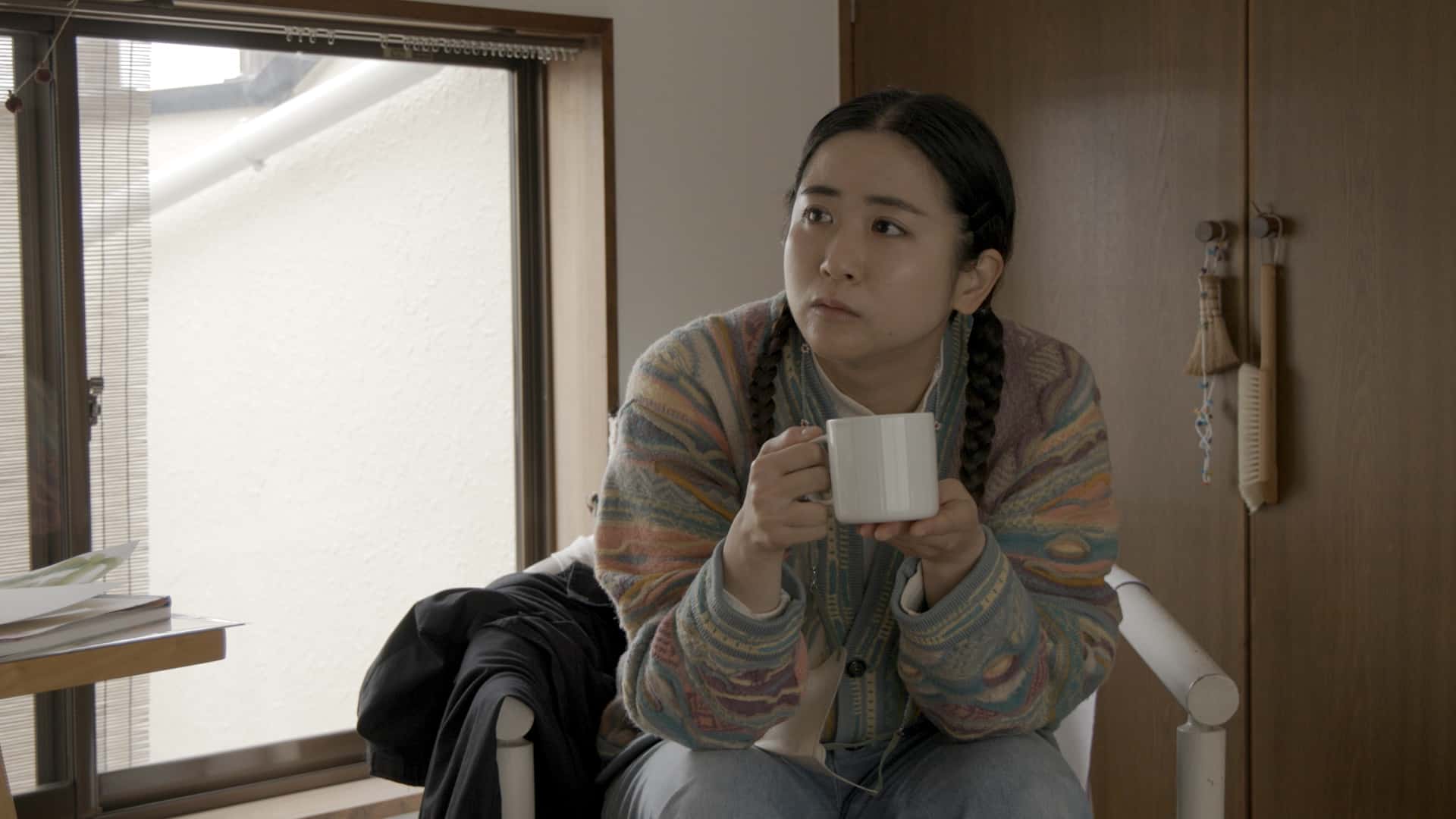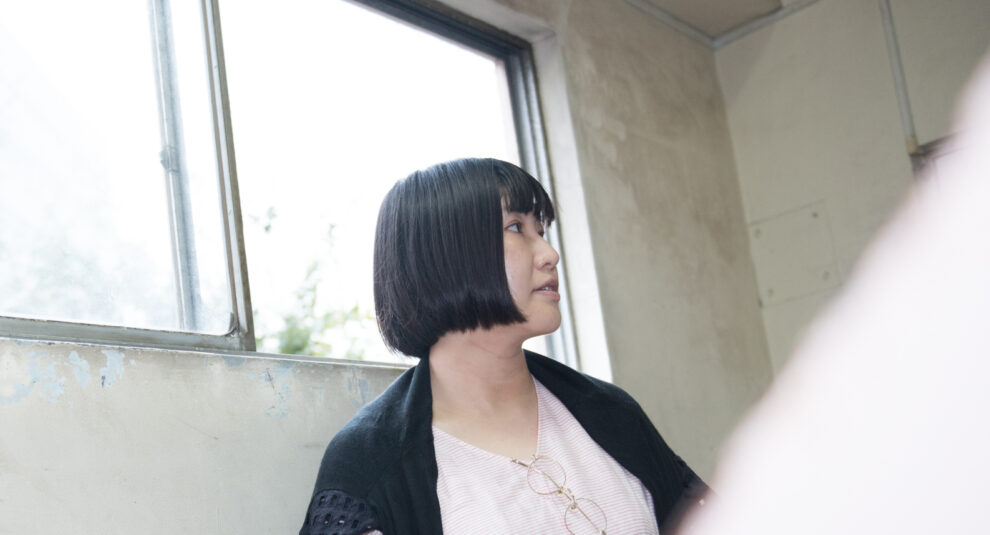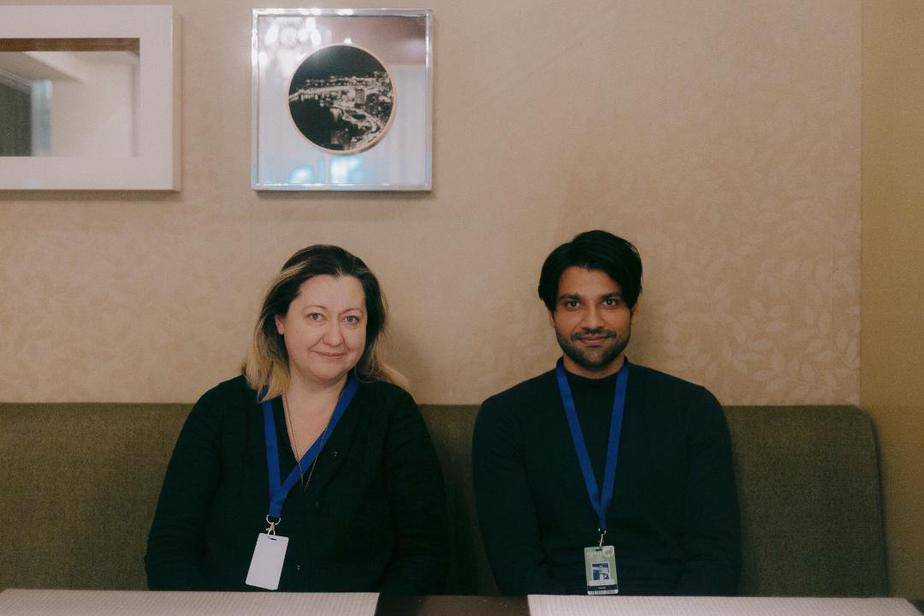Born in 1985, raised in Kanagawa, Japan, Natsuka Kusano, after graduating from Tokai University's School of Cultural Studies (Department of Creative Writing), completed the 12th Fiction Course of the Film School of Tokyo. In 2014 she directed her first feature-length film, “Antonym” (“Rasen Ginga”), which received both the SKIP City Award and Best Director Award at the 11th SKIP City International D-Cinema Festival in Saitama, Japan. The film tells of two friends struggling with writing a radio play. Her second feature-length film, “Domains”, was created on the invitation of Aichi Arts Center, Japan, and was screened, for its world premiere, at International Film Festival Rotterdam. This film is the story of a murder, staged with dialogues like in an actors' table-read. Her third feature film, a medium-length film, “Till the End of the Dream”, was premiered at the last edition of FIDMarseille. This film is about a woman alone, Yoshimi, who tries to come to terms with the loss of a loved one under the weight of the Hiroshima disaster.
On the occasion of her presence at FIDMarseille 2023, we speak with her about her three movies, and her original style.
Till the End of the Dream screened at FIDMarseille 2023

Interview by Giampiero Raganelli
In your first two films, “Antonym” and “Domains”, you work on a sort of deconstruction/decomposition of the narration, by having the dialogues of a radio drama, or a film, as repeated by pairs of actors who read the script, as when rehearsing their part, or while shooting the film for the first time, with the clapperboards in full view, in “Domains”. The same dialogues are repeated several times. Can you tell me the reason of this very original artistic style? How did you develop it?
For “Antonym” I chose radio drama as a topic because I wanted to deal with recitations. I wanted to move from the fictional layer of cinema to the meta layer, to create a moment in which the characters on the screen waver between “the characters” and the actors themselves. As for “Domains” I decided to focus on “directing” which I could not pursue in “Antonym” and regretted, and that is how I ended up with the format I used. It was not an attempt to deconstruct the story, but to confront the “actor's body” in a simpler way.
Even in the moments outside the reading of the dialogues, some characters appear dazed, inexpressive, like Aya in “Antonym”, as if they were actors who are not really acting. Can you tell me about this?
That may be due to my lack of ability… However, there is one possible reason, and that is that I personally prefer films with poor facial expressions. Poor facial expressions test the viewer's imagination and open up a wider range of interpretation because it is difficult to understand the psychological situation. I like such films. In my next feature film, I would like to work on the theme of “Noh masks”. My own interest is also moving from voice to “facial expression of nothingness”.

Even your directing style reflects this peculiarity of yours. There are few shots/reverse shots for example. Often there is only one character's field while the other speaks off-screen. Can you tell me about this choice too?
This has to do with the fact that my productions are almost entirely self-financed. Since I don't have much money, I have little time available for filming. Not using shot/reverse shot is also to save time. However, I think it also has a lot to do with the fact that I don't want the same performances to be repeated over and over again, and that I believe in the possibilities of “off-screen” in film more than on-screen.
Does your style have anything to do with Brechtian estrangement?
So far it has nothing to do with Brecht. I have too little knowledge to talk about Brecht. However, I am interested in learning about Brecht's methodology and works.
Sometimes there are car ride scenes as if to compensate for the stillness of the other scenes. Can you tell me about it?
I believe that one of the requirements for a good film is to effectively depict the time of travel. I myself have not been able to do that yet, but I would like to keep challenging myself to do so. It may also have something to do with the fact that I really like the feeling of being vague about “where I am now” after watching movies.
Check also this interview
The locations of your films are very important. Like “Antonym”‘s laundromat but also “Till the End of the Dream”'s cottage, in the interiors, which look like a doll's house. How do you choose the locations for your films?
Everything is brought to us by chance. The laundromat happened to be near where I was meeting with the scenario writer, and fortunately we were able to use that location as a filming location. The cottage for “Till the End of the Dream” was my sister's room at my parents' house. Similar to the exploration of “off-screen possibilities”, I like places that are like shelters. Outside that place could be a paradise or a battlefield. It is impossible for the audience to know.
The film “Till the End of the Dream” no longer features those typical scenes of the other two. There is a reading and the concepts of art and artists. Painting, statuettes, novelists are important. Can you tell me about it? Why dealing with the Hiroshima theme from so far away, through the books of local writers?
The actors in “Till the End of the Dream” are all playing themselves. I asked them to tell their own personal experiences based on the composition table (fiction) that I created, and “he or she” that they create approaches a fictional character with universality. It was important for me that they are creators such as artists or a secondhand bookstore owner, to have them play themselves. I feel that creating Hiroshima in Tokyo is similar to creating fictional characters. When I received the offer to “make a film about Hiroshima” this time, I decided that I, as a stranger, didn't have enough time and experience to “talk” about Hiroshima with a major event. Therefore, it was important for me to get as close as possible to a “minimal, personal event” and to make it universally felt, in order to shoot a film about Hiroshima in Tokyo.















